Flight Mars-Earth: ballistic tricks and atmospheric surfing
 Bashny.Net
Bashny.Net
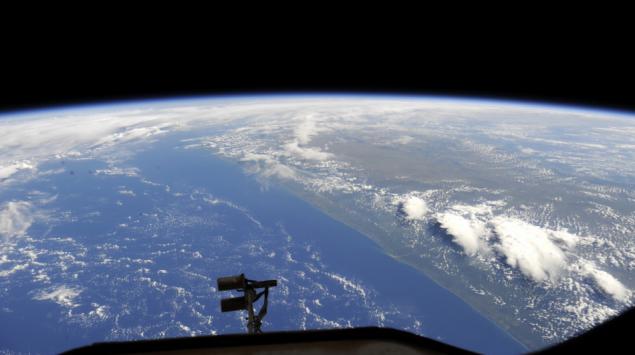
From the Earth to Mars we already Orbiter'e flew , it would be necessary to go back and forth. And as the complexity of the problem we will try to come back quickly and use the Earth's atmosphere for accurate landing at Cape Canaveral to the fullest.
flight plan h4> For convenience, we divide our flight the following steps:
- Start from Mars
- Acceleration from the orbit of Mars
- The maneuver to intercept the Earth
- The combination of orbital planes and intermediate correction
- Hallway entrance, aerodynamic drag of Earth's atmosphere and exact fit
Preparing to fly h4> addition Orbiter'a we need only one addon - AerobrakeMFD . For your convenience, I overlaid on Google docs conservation phases of flight. If you want to do only some part of the flight - download and unzip the archive to a folder Scenarios Orbiter.
It is assumed that you are familiar with the space ballistics, simulator Orbiter, and at least read the series of publications on flights . If not - at least read the publication of flight Earth - Mars . Basic terminology and hotkeys will not be explained here.
Step 1: Start with Mars h4> Before running the script move on to the settings. Including the mode of infinite fuel and turn off the simulation of damage. The latter is necessary because the Earth's atmosphere is very dense, one wrong move and we fall off the ailerons. However, if you want you can add adrenaline, including the simulation of damage.
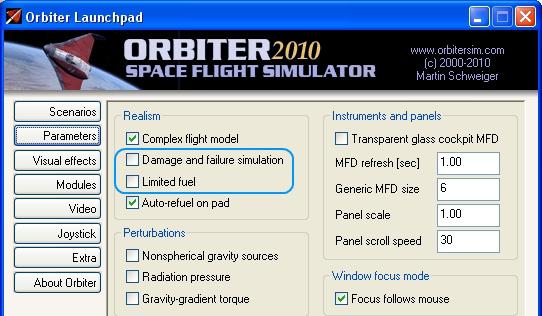
To start choose a script from the base of delivery: Delta-glider - Brighton Beach
After the launch, we find ourselves on the moon. So it should be. Pressing F3 , switch to another ship, which stands at the base of Olympus on Mars. His tail number GL-02
All we on Mars:

"Check the pressure hydraulic systems - done. Check testimony propulsion reactor control systems - done. Start space ambient - done. Map-launch monitoring performed, ready for take-off ».
Low gravity of Mars allows you to easily start vertically on the lift motor. Turn on automatic maintenance of the horizon ( L ) and translate the lift motor for maximum traction. Retractable landing gear after takeoff, turns on the course 90 ° and start overclocking:
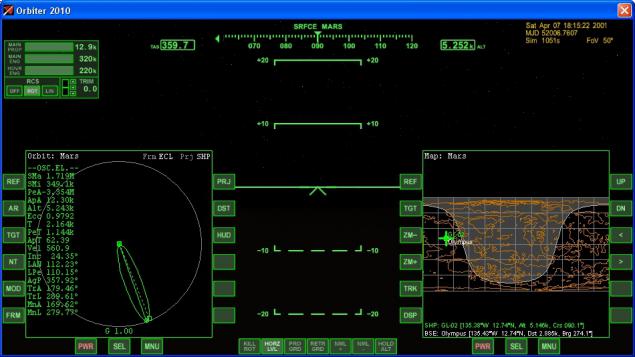
During acceleration reserve orientation mode in terms of horizon and gently clean up traction hoist motors. When apocentre height is ~ 100 km, turn off the main engine.

In the area apocentre again include boosters and go for a circular orbit around Mars:

At an altitude of 100 km there is still some remnants of the atmosphere, but it's not scary to us - in this orbit, we will not more than a couple of turns. Phase 1 is completed. Saving this point - the file «01 Low Martian orbita.scn»
Step 2: Acceleration from the orbit of Mars h4> Because Mars is farther from the Sun than the Earth, it is necessary to slow down to get out on the course, intersecting the Earth. Therefore maneuver similar to the orbit of Mars to perform better on the day side of the orbit to the escape velocity for Mars subtracted from its orbital velocity:
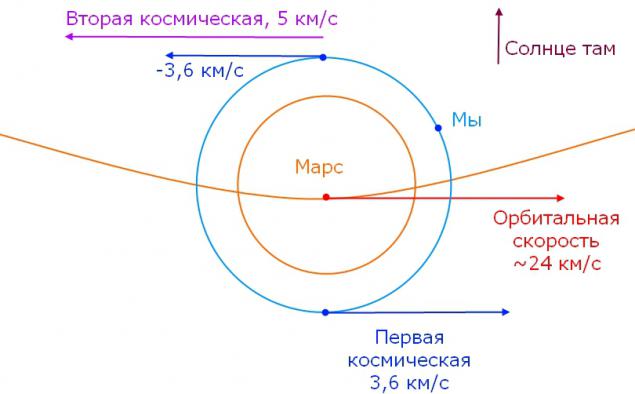
MFD prepare to maneuver and start acceleration according to the testimony of the IDF "Transition»:
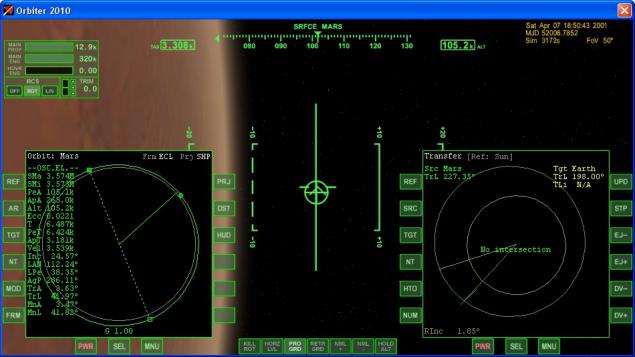
To intercept the Earth, we need to perform a difficult maneuver, so at this point will stop acceleration, when the IDF "Orbit" will show that we have reached the second space and leave the orbit of Mars:
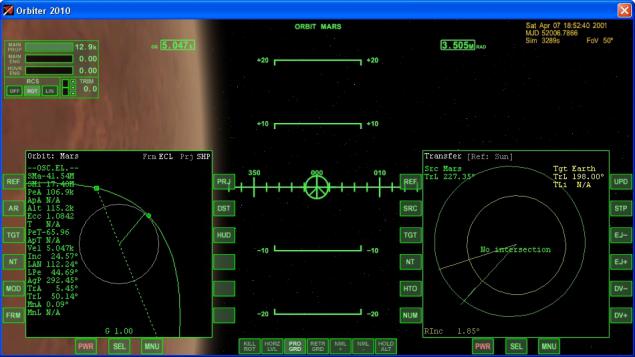
Phase 2 is complete, saving - «02 Acceleration from orbit Marsa.scn»
Step 3. Maneuver to intercept the Earth h4>
Accelerating time as long as we do not find ourselves outside the gravitational influence of Mars:
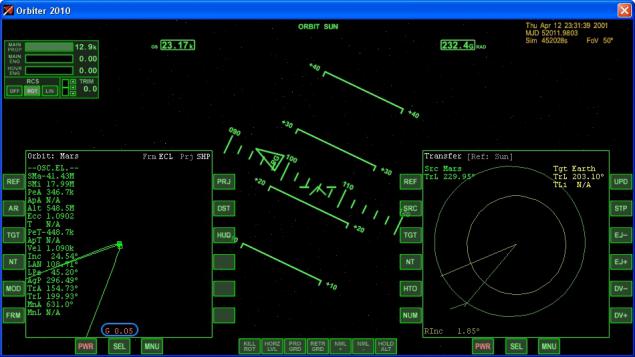
We plan to maneuver to intercept the Earth MFD "Transition»:
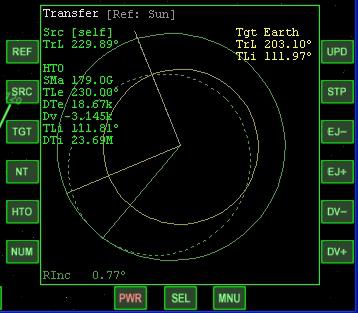
The proposed solution working and frugal, and you may well fly along this trajectory. But the trip will take somewhere in the first nine months (look at the current position of the Earth and the position of the point of intersection - the Earth will be held approximately 3/4 of the orbit). It's a long time if we could somehow accelerate the flight? Yes, you can fly almost twice as fast. To begin with, a maneuver braking according to our original plan:
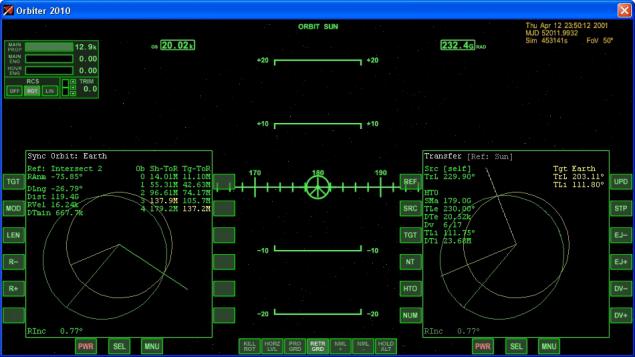
Intermediate storage - «03a Gomanom manevr.scn»
Look at the left MFD "Sync orbit." By pressing the MOD on the MFD, I chose not to distant point of intersection of the orbit and the Earth, and one's neighbor. We see that we'll be there in 14 megasekund, and the Earth - through 11. That is, at this point it will overtake us. So, we need to accelerate to be at this point along with it. But what course? Let's think. If we begin to accelerate to the orbital velocity vector, then go back to the situation in the previous step, it does not make sense. If we accelerate towards the Sun, it also would not make sense, because the intersection point will be shifted to the left, and we need to be very dispersed in time to intercept the Earth literally directly at the sun. So, we need to accelerate somewhere in the range of 30-60 ° from the direction of the Sun:
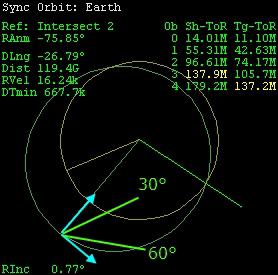
Try overclocking rate of 45 ° from the line to the Sun, ie, with respect to the orbital velocity vector 315 °:

Time difference decreases markedly, but the point goes to the right orbit. So, we need to accelerate "the left." Focusing on the parameter Tg-ToR (after how many seconds the Earth would be at the selected point) and visually on the motion of a point on the MFD maneuver in the range of rates of 290 ° -310 ° until the indicator DTmin is not reduced to a minimum:
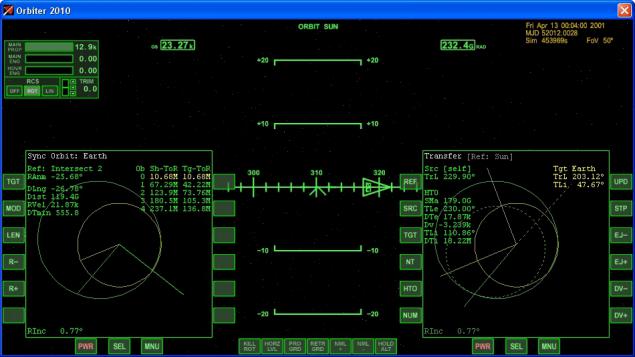
Pay attention to the orbit. We were dispersed as if no return from Mars and Jupiter. This is very inefficient in terms of fuel, but in the world we are less than 4 months. Stage 3 is completed, the preservation of - «03b Change orbity.scn»
Step 4: The combination of orbital planes and intermediate correction h4>
Will check the angle between the planes of the orbits of our:
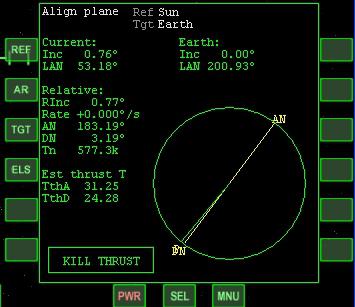
We were not lucky, we recently passed node, and to accurately align the plane of the orbit, we need two maneuvers. But it's for the best, there is a lot to learn. Firstly, the time we will not get to the point of junction of the meeting with the Earth, you must move it there. Usually begins maneuver combining the orbital plane. We are near the descending node, so we will accelerate the "up". Note that the line of nodes begin to shift. When descending node takes place between our current position and the point of meeting with the Earth, stop the maneuver:

Ok, now time to accelerate the descending node and exactly compatible orbital planes already there:

After the precise alignment of the correction planes of the orbits of the orbit for fine meeting with the Earth. Take a position on the orbital velocity vector, will give impulses pushing forward / backward and left / right. Which way DTmin is reduced there and give impetus:

Excellent correction made. For 5 megasegund before meeting the correction was no sense (the parameters do not have time to "spoil"), repeat it for the 2, 5 and 1 megasekundu to the point of the meeting:
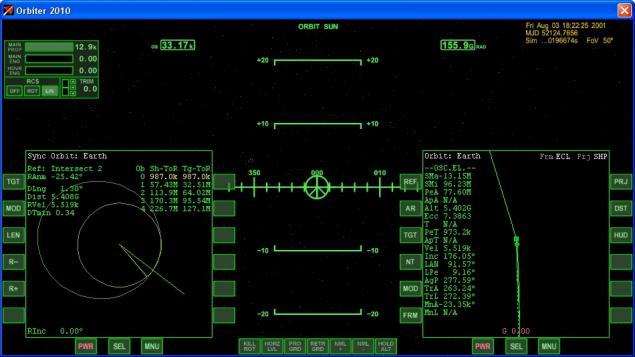
Step 4 is completed, the preservation of - «04 One megasekunda to Zemli.scn»
Step 5: Hallway entrance and aerodynamic drag of the Earth's atmosphere h4> squander time, for as long as the gravitational influence of the Earth will not become dominant:

The earth turned to us the night side, it is convenient. Our task - to maneuver so that the periapsis would be 50 km, and the orbital velocity vector was aimed at the day side. In this case, we will slow down comfortably on the dayside of the Earth:
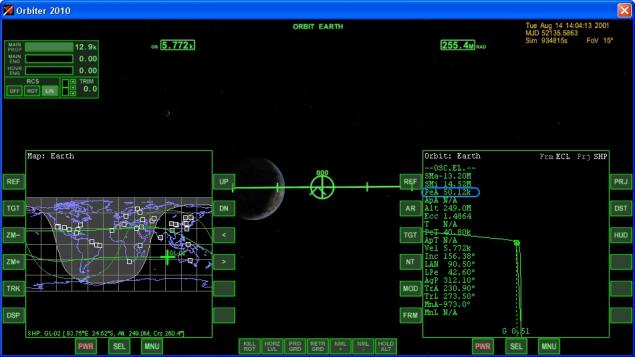
Intermediate storage «05a Corridor vhoda.scn»
Before entering the atmosphere expose elevator trim as much as possible up and occupy the position of a bank angle of 90 °. Plan our next braking. We will take the height of 40-50 km, and will extinguish speed, at the same time leads to the Cape Canaveral. When our speed will be less than the orbital, we vynyrnem from the atmosphere and get into it again in the target area.
900 km, the Earth is at hand:
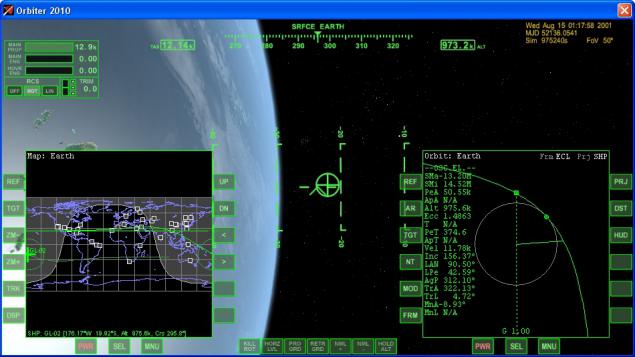
Intermediate storage «05b Nine kilometrov.scn»
In the area of pericenter maneuvering roll - extinguish both vertical speed and vertical acceleration:
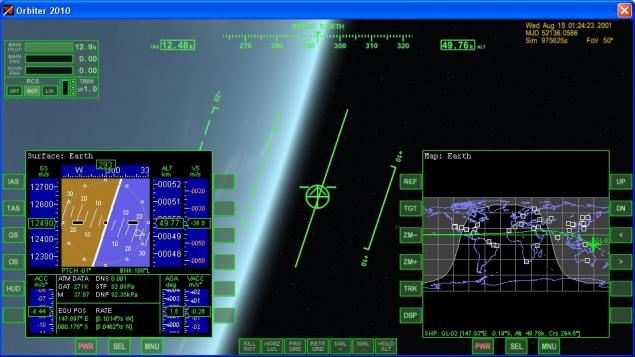
From the point of view of physics turned a funny situation. We were in the area of sustainable braking. Here is a simple to find and very convenient to brake. But if we inadvertently made a big vertical speed, either departure from the atmosphere as a flat rock out of the water, or Vrezh into the ground at high speed. Interesting feeling, a kind of cosmic surfing ...
In no case do not let air brakes, you are likely to lose control. Control the vertical velocity and acceleration, do not forget to glance at the map on the right - changing the inclination of the orbit, we should be picking up on Cape Canaveral:
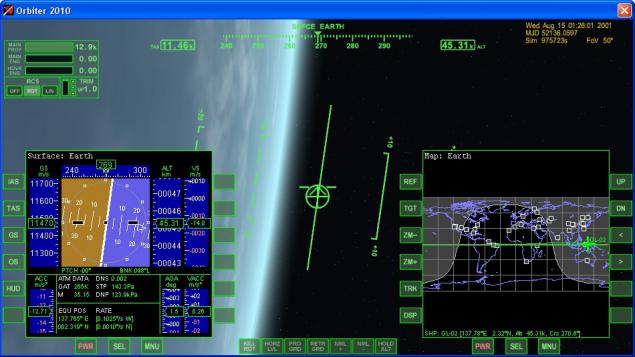
The ship goes through the atmosphere like a knife through butter. Comfortable conditions of braking, a little more than one "same." In reality, such vehicles mankind does not build. The ship actually goes into a polar orbit, and the first round is not far from the Cape (yes, sometimes called simply the Cape, with a capital letter). We must be careful, we almost lost the orbital velocity, and it is inconceivable that the path has gone far toward:
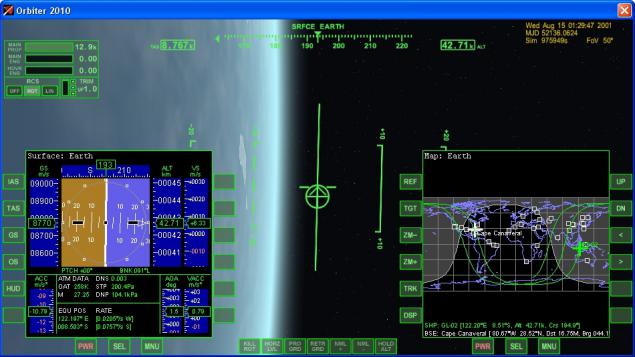
When the trajectory goes away, abruptly flipped to the other side and quickly minimize the vertical speed:

When the speed drops below the orbital on the map orbit torn apart. Once we start "does not reach" to the target, quickly turns to zero pitch angle - it's time to escape from the atmosphere!
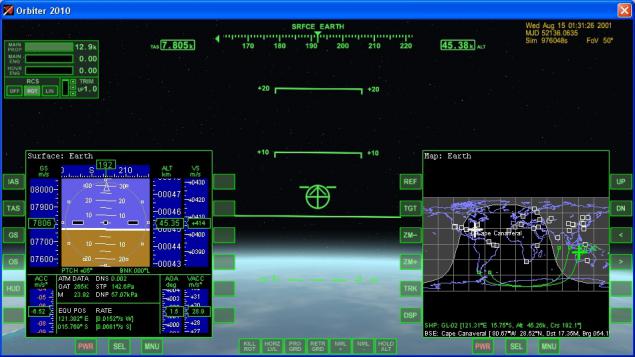
The atmosphere behind, but speed is below the first space, and we have become a ballistic missile, or, more precisely, bomber Zenger . Preparing for the final landing site - translate on-board radio frequency ILS Cape Canaveral. ILS frequency available at Ctrl-I , it is 134.20 and 132.60 MHz:

Intermediate storage «05c After the first tormozheniya.scn»
Expose them to the MFD ( SL- / SL + selects the channel, & lt; & lt; / & gt; & gt; sets the integer part, & lt; / & gt; b > - fractional):

Again, the boundary of the atmosphere. The main thing - to extinguish the vertical speed and to avoid deviations from the target trajectory for the IDF "Aerotormozhenie»:
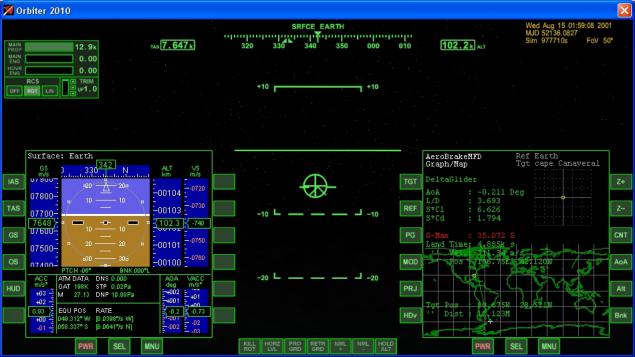
Another rebound from the atmosphere:
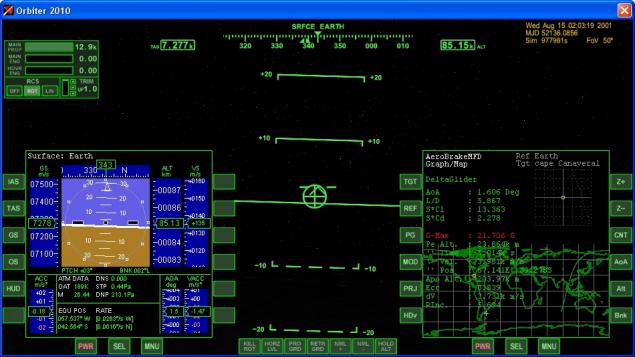
Again begin to decline:

Closer to the goal. We produce air brakes ( Ctrl-B ) and is ready for active maneuvers:
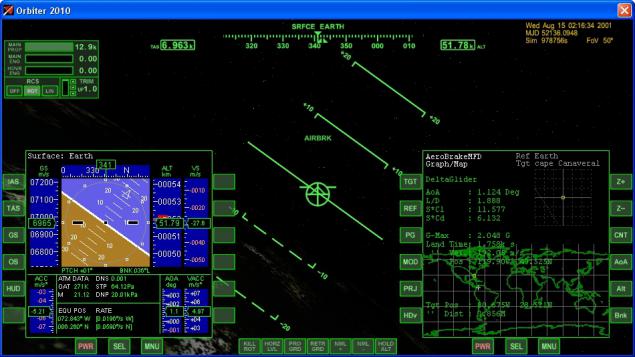
To the target quite a bit, and the speed drops. Supported by a small rate of descent to brake smoothly as possible:
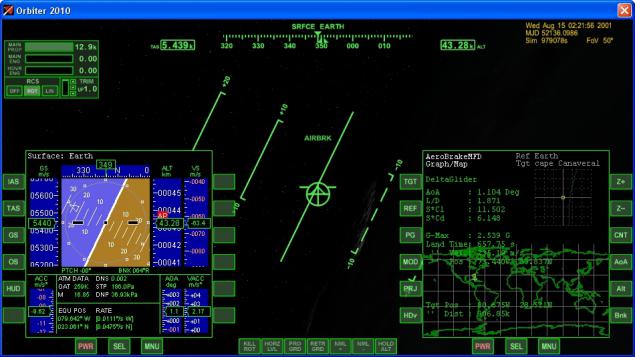
Reached the target area:
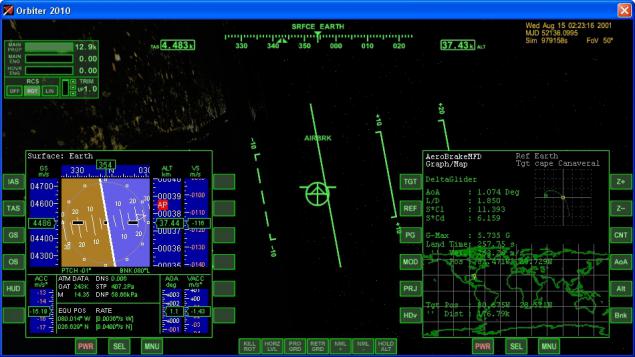
Flew purpose, it is normal. Remove the air brakes and actively deployed to approach:
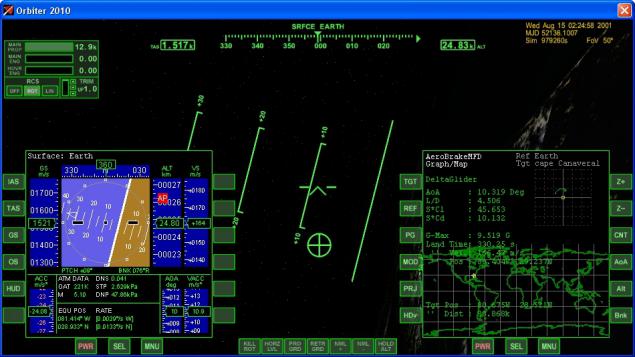
Unfolded, include ILS (MFD "horizontal situation indicator» Shift - H ). Unfortunately, ILS operates at extremely close range, yet just trying to reach the area of the runway:
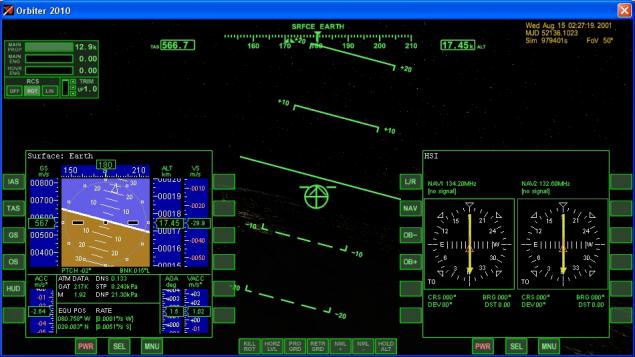
Instrument landing system works exactly the same way as in aircraft, the pilot is required to manage the ship so as to maintain the vertical and horizontal indicators in the center position:

When the runway is visible (the night, but the weather is good), the landing approach, focusing on the runway visually and Instrument landing system. Try to catch the glide path. It is difficult, if necessary, release the air brakes or give impetus to the motor to accelerate.
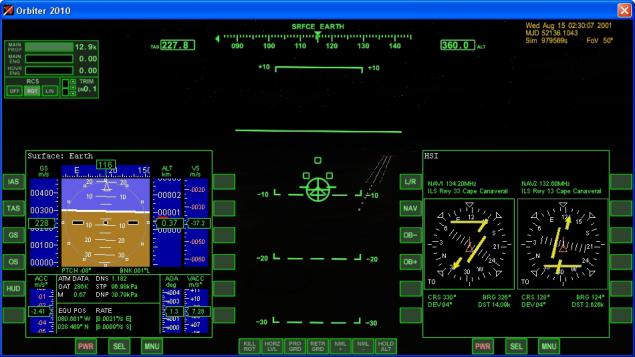
After touching the band brake (left wheel - , (comma), brake right - . B> (point)). There are landing!
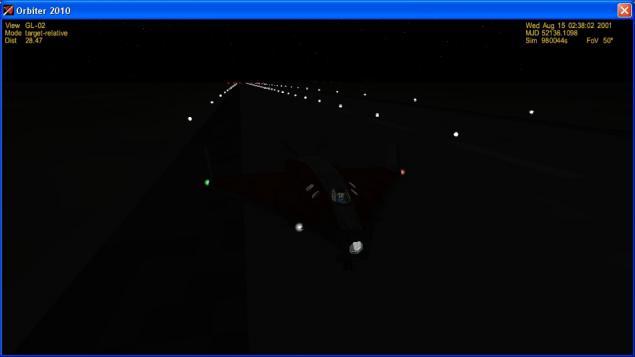
Conclusion h4> As KDPV used a photo from the gallery orbital Alexander Samokutyaeva.
translated into Russian manual Orbiter'a .
whole series of my publications about flights to Orbiter .
Source: geektimes.ru/post/244790/
Tags
See also
What do we know about Mars?
Directly to Mars. Meeting with the President of the Mars Society in Moscow
Why are we in space do not fly on holiday
Why bomb Mars?
The second riddle of Mars
In the driest places on Earth there is life
Interesting and informative, controlled landing on the PTK NP
And you would agree to live on Mars?
Flight to Mars: non-Hohmann transfer orbit, aerotormozhenie complexity and landing in the rarefied atmosphere
Why colonize Mars is difficult - and that this should be done



























































